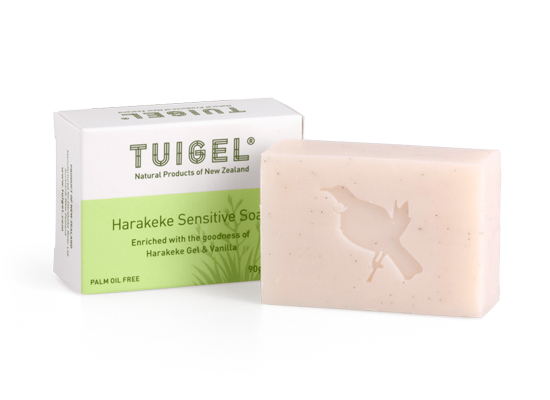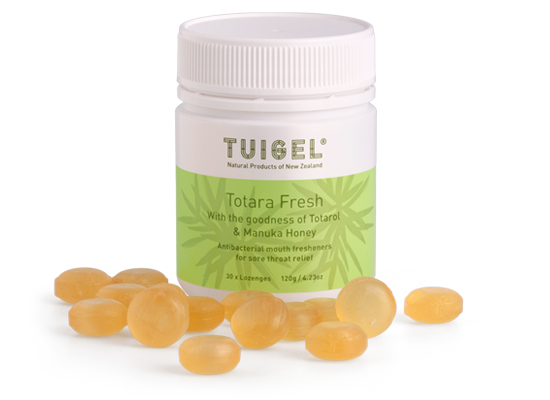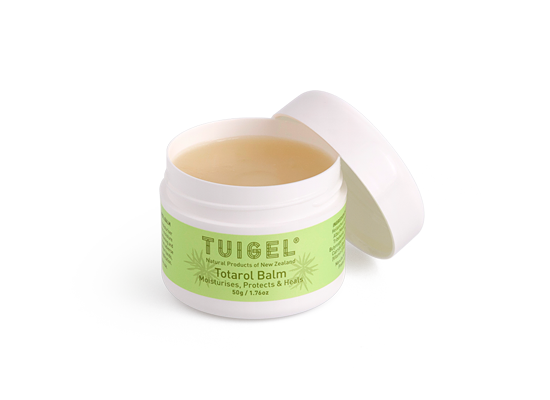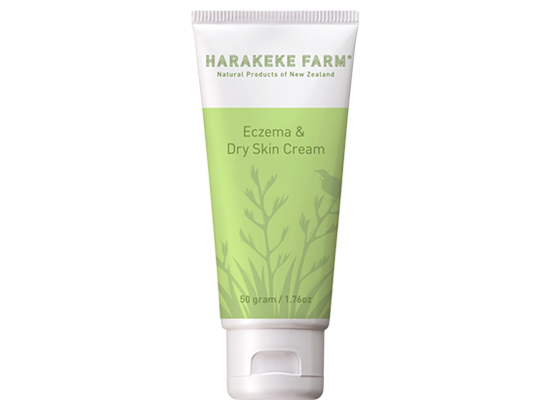TUIGEL is infusing the unique properties of New Zealand plants into a new range of natural skin care and health products.
We look to traditional sources of knowledge about our plants and their properties, and then carefully test different ingredients to create products that really work. By combining the benefits discovered in Māori traditional medicine with the best of modern science, we aim to bring you a range of care products unlike any other.
Because of New Zealand's geographic isolation, a unique flora has developed here over millions of years.
80% of native New Zealand trees and ferns are not found anywhere else in the world. The special properties of these plants - such as the remarkable healing properties of Harakeke, Totara and Manuka - are still being discovered and studied, and every year their benefits are better understood.
About Harakeke
HARAKEKE
Harakeke is the Māori name for New Zealand flax (Phorium Tenax). Harakeke is unique to New Zealand and is one of our oldest plant species. It can grow up to three metres high and its flower stalks can reach up to four metres. Harakeke grows throughout New Zealand. It can be found in lowland wetlands and beside rivers, and in coastal areas on estuaries, dunes and cliffs. Harakeke was much more abundant 100 years ago in many regions, but fewer large wild stands can be seen today. Harakeke is popular in gardens, is used widely in landscaping and in wetland restoration plantings, and as shelter belts on farmland.
TRADITIONAL USES
Harakeke has had many uses in traditional Māori society. It was an important fibre plant and has been widely used since the arrival of Māori to New Zealand. Originally used in the weaving of textiles, and in rope and sail making, today Harakeke is also used to create contemporary works of art. The abundant nectar from Harakeke flowers was used as a sweetener in food while the natural antiseptic properties of the leaves and roots made it invaluable in traditional Māori medicine.
HARAKEKE IN MEDICINE
Phorium Tenax found many uses in traditional Māori medicine due to its natural antiseptic properties. The roots were ground up and used as a healing poultice for skin infections, to kill intestinal worms, and as a purgative, while the juice from the base of the leaves was applied to wounds and burns as a disinfectant. The fibrous qualities of Harakeke were also useful. Leaves were suitable for binding broken bones and matted leaves were used as dressings, a sore back would be heated by the fire before being supported with a flax belt, and bad cuts were stitched with thin fibre using a sharpened stick.
HARAKEKE GEL
The base of Harakekes long sword-shaped leaves yields a gel with strong medicinal properties. The gel is extracted from mature leaves to ensure the sustainability of the plant. Harakeke gel naturally hydrates, moisturises and soothes the skin while reducing inflammation and aiding the healing process. Harakeke gel also contains a high quantity of nutrients and polysaccharides that improve skin health.
About Totarol
TOTAROL
Totarol is a natural and organic plant extract derived from the heartwood of the New Zealand Totara tree (Podocarpus Totara). Totarol and related compounds are produced in the Totara tree after approximately 150 years of growth. It contains powerful antibacterial and antioxidant properties which makes the wood extremely resistant to decay. This natural phenomenon protects the tree from bacterial attacks and environmental influences, allowing the tree to grow for thousands of years. Totarol has been found in a large number of plants including podocarp species, Cypress, Juniper, Thuja, Rosemary and Rimu. However the most abundant source is the heartwood of New Zealand Totara.
THE TOTARA TREE
Totara is a species unique to New Zealand and can be found throughout the country. The oldest living Totara, standing 40 metres high is estimated to be over 1800 years old. In former times it was particularly abundant in the forests of the central North Island. Māoris revered Totara as a symbol of strength and used the wood for canoe-making because of its length, lightness and durability. The timber of Podocarpus Totara is renowned for its resilience against rotting, which made it valuable to early European settlers of New Zealand for uses such as wharf piles, fence posts and foundation blocks. This durability stems from the anti-bacterial activity of Totarol.
EXTRACTION
Totarol is sustainably produced from old recycled bark and wood so live trees are not felled for its extraction. The chipped heartwood undergoes a special supercritical CO2 extraction process so that the extract is free of solvent residues and allows it to be fully organic.
PROPERTIES
Totarol demonstrates potent anti-bacterial activity in gram positive and gram negative bacteria. Totarol is especially active against tooth decay and acne causing bacteria, and is one of the rare phytochemicals active against penicillin and methicillin resistant strains of Staphylococcus aureus. Totarol is also a potent antioxidant which can protect cells from free radical damage that can occur from exposure to certain chemicals, smoking, pollution, radiation, and as a byproduct of normal metabolism.
MICROBIOLOGICAL REPORT
An independent microbiological challenge test for Totarol was carried out by Fort Richard Laboratories (formerly Bacteriological & Chemical Laboratories) in 2017. The organisms Staphylococcus aureus, Escherichia coli, Pseudomonas aeruginosa, Aspergillus niger, and Candida albicans were exposed to Totarol. In all cases bacterial growth was completely suppressed, while the control group displayed strong bacterial growth. View Report





